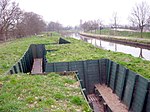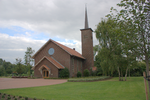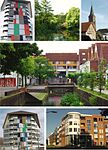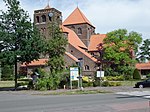Scherpenzeel, Gelderland
Gelderland geography stubsMunicipalities of GelderlandPopulated places in GelderlandScherpenzeel, Gelderland

Scherpenzeel (Dutch pronunciation: [ˈsxɛrpə(n)ˌzeːl] (listen)) is a municipality and a town in the Dutch province of Gelderland. As of 2019, it has a population of 9,873, with approximately 6,000 adults. The community of Scherpenzeel also contains a part of the hamlet of Moorst. Dutch topographic map of the municipality of Scherpenzeel, June 2015
Excerpt from the Wikipedia article Scherpenzeel, Gelderland (License: CC BY-SA 3.0, Authors, Images).Scherpenzeel, Gelderland
Glashorst,
Geographical coordinates (GPS) Address Nearby Places Show on map
Geographical coordinates (GPS)
| Latitude | Longitude |
|---|---|
| N 52.083333333333 ° | E 5.4666666666667 ° |
Address
Glashorst 131
3925 BR
Gelderland, Netherlands
Open on Google Maps











